Key Takeaways
1. Alan Mulally's transformative leadership saved Ford from bankruptcy
"If everyone is moving forward together, then success takes care of itself."
Cultural transformation: Mulally's leadership style focused on teamwork, transparency, and accountability. He broke down silos between departments and regions, encouraging open communication and collaboration. His "Working Together" management philosophy, imported from his success at Boeing, became the cornerstone of Ford's turnaround.
Strategic vision: Mulally developed a clear plan to save Ford, focusing on four key points:
- Aggressively restructure to operate profitably
- Accelerate development of new products customers want and value
- Finance the plan and improve the balance sheet
- Work together as one team, leveraging global assets
His ability to articulate and execute this vision, despite initial skepticism from both insiders and outsiders, was crucial to Ford's survival and eventual success.
2. Ford's "One Ford" strategy unified global operations and product development
"We're going to merge with ourselves."
Global integration: Mulally recognized that Ford's regional divisions were operating too independently, leading to inefficiencies and duplication of efforts. The "One Ford" strategy aimed to:
- Unify product development globally
- Streamline operations across regions
- Leverage Ford's global scale and resources
Product rationalization: Mulally drastically reduced Ford's product lineup, focusing on core models that could be sold globally. This approach:
- Reduced development costs
- Improved economies of scale
- Allowed for greater investment in remaining products
The strategy resulted in successful global vehicles like the Ford Fiesta and Focus, which performed well in multiple markets.
3. Refusing government bailout differentiated Ford and boosted public perception
"We're not asking for any federal money. We're trying to pull ourselves up by our bootstraps and make it on our own."
Public perception: Ford's decision to forgo government bailout funds set it apart from GM and Chrysler, garnering public goodwill and respect. This strategic move:
- Improved Ford's brand image
- Attracted new customers
- Boosted employee morale
Financial independence: While challenging, this decision forced Ford to make tough choices and implement necessary changes without government intervention. It also:
- Preserved Ford family control of the company
- Allowed for more flexibility in decision-making
- Positioned Ford for a stronger recovery once the market improved
4. Mulally's data-driven approach and weekly BPR meetings drove accountability
"The data sets you free."
Business Plan Review (BPR) meetings: Mulally instituted weekly meetings where executives presented color-coded data on their areas of responsibility:
- Green: on track
- Yellow: caution
- Red: off plan
This system encouraged honesty about problems and fostered a culture of accountability and problem-solving.
Transparency and honesty: Mulally's insistence on facing reality and discussing problems openly was a significant shift from Ford's previous culture. This approach:
- Identified issues early
- Encouraged cross-functional problem-solving
- Aligned the entire leadership team around common goals and challenges
5. Ford's focus on fuel-efficient vehicles and new technologies positioned it for future success
"We must also recognize that the difficulties facing this industry are due in no small part to the weaknesses in our economy as a whole."
Product strategy shift: Recognizing changing consumer preferences and regulatory pressures, Ford invested heavily in:
- Fuel-efficient vehicles (e.g., Ford Fusion Hybrid)
- Electric and hybrid technologies
- EcoBoost engine technology
Technology leadership: Ford's development of technologies like SYNC (in partnership with Microsoft) and EcoBoost engines demonstrated its commitment to innovation and meeting consumer demands for both efficiency and connectivity.
6. Strategic financial moves, including massive loans, provided crucial liquidity
"We have got to turn around North America and be profitable by 2009. Because if not, you just keep losing cash and pretty soon you run out."
Securing financing: Ford's decision to mortgage virtually all its assets to secure a $23.6 billion loan in 2006 proved crucial for its survival and turnaround. This move:
- Provided necessary liquidity during the financial crisis
- Allowed for continued investment in product development
- Demonstrated foresight in anticipating market challenges
Debt restructuring: Ford's successful debt-for-equity swaps and other financial maneuvers helped reduce its debt burden and improve its balance sheet, positioning the company for long-term financial health.
7. Labor negotiations and supplier management were critical to Ford's turnaround
"We have to deal with reality and structure ourselves to deliver the vehicles that the customers want, in the amount that they want."
UAW negotiations: Ford's ability to negotiate more competitive labor agreements with the United Auto Workers union was crucial for reducing costs and improving flexibility. Key achievements included:
- Reducing labor costs
- Eliminating the jobs bank program
- Gaining more flexible work rules
Supplier management: Ford's "Project Quark" initiative helped manage its supply chain during the crisis, ensuring continuity of parts supply and supporting critical suppliers while also reducing overall costs.
8. Ford's ability to make tough decisions on brands and dealerships streamlined operations
"We have a laser focus on our most important brand, the Ford Blue Oval."
Brand divestiture: Ford sold off several brands to focus on its core Ford and Lincoln brands:
- Aston Martin (2007)
- Jaguar and Land Rover (2008)
- Volvo (2010)
Dealer consolidation: Ford worked to reduce its dealer network, particularly in urban areas, to improve profitability for remaining dealers and reduce internal competition.
These moves allowed Ford to concentrate its resources on strengthening its main brand and most profitable markets.
9. The 2008 financial crisis presented both challenges and opportunities for Ford
"Unless you have courage, a courage that keeps you going, always going, no matter what happens, there is no certainty of success."
Crisis management: The 2008 financial crisis and subsequent auto industry collapse tested Ford's resilience. The company's response included:
- Accelerating cost-cutting measures
- Further reducing production to match demand
- Leveraging its improved liquidity position to weather the storm
Market share gains: As GM and Chrysler struggled through bankruptcy, Ford was able to gain market share and attract new customers, positioning itself for stronger growth as the market recovered.
10. Ford's turnaround success contrasted with GM and Chrysler's government bailouts
"We want to make sure we're not being disadvantaged."
Competitive landscape: While Ford celebrated its independent turnaround, it faced new challenges as GM and Chrysler emerged from bankruptcy with government support:
- Reduced debt loads for competitors
- Government-backed financing for GM and Chrysler customers
- Potential for government influence in the auto market
Long-term positioning: Despite these challenges, Ford's success in turning itself around without government intervention positioned it well for long-term success, with a stronger brand image and more nimble organization.
Last updated:
FAQ
What's American Icon: Alan Mulally and the Fight to Save Ford Motor Company about?
- Focus on Ford's Turnaround: The book chronicles Alan Mulally's leadership as he takes over Ford during a crisis and implements strategies to revitalize the company.
- Historical Context: It provides a detailed history of Ford, highlighting its challenges and competition, especially during the 2000s.
- Leadership and Culture: Emphasizes Mulally's leadership style and the cultural changes he introduced to foster collaboration and accountability.
Why should I read American Icon?
- Inspiring Leadership Lessons: Offers insights into effective leadership and management, especially in times of crisis, relevant for business professionals.
- Real-World Case Study: Serves as a case study of corporate turnaround strategies, showcasing Ford's transformation from near bankruptcy to profitability.
- Cultural Transformation: Highlights the importance of corporate culture and its impact on an organization’s success or failure.
What are the key takeaways of American Icon?
- Importance of Transparency: Mulally emphasized honesty and transparency, stating, “The data sets you free.”
- Team Collaboration: Highlights the significance of teamwork, with Mulally implementing a weekly business plan review process.
- Focus on Core Competencies: Mulally's strategy involved simplifying Ford's product lineup and focusing on consumer-desired vehicles.
What are the best quotes from American Icon and what do they mean?
- “The neatest thing about this process is that we’re going to get back together next week.”: Reflects Mulally's commitment to continuous improvement and accountability.
- “We have a lot of brands. We have a lot of nameplates.”: Underscores the complexity within Ford, which Mulally aimed to simplify.
- “We must change to grow and survive.”: Encapsulates the urgency of transformation necessary for Ford's competitiveness.
Who is Alan Mulally, and why is he significant in American Icon?
- Background and Experience: Former CEO of Boeing's Commercial Airplanes Group, known for leading the development of the Boeing 777.
- Transformational Leadership: Focused on collaboration, transparency, and accountability, which he applied to Ford.
- Crisis Management: His ability to navigate crises and implement strategic changes is a central theme of the book.
What challenges did Ford face before Mulally's arrival?
- Declining Market Share: Ford lost market share to foreign competitors due to outdated products and poor quality.
- Financial Losses: The company faced massive financial losses, with projections indicating a loss of over $12 billion for the year.
- Cultural Issues: Characterized by infighting, lack of accountability, and resistance to change, hindering adaptation to market demands.
How did Mulally approach the restructuring of Ford?
- Weekly Business Plan Reviews: Implemented a system to ensure executive accountability and alignment with company goals.
- Simplification of Product Line: Focused on reducing brands and models to streamline operations and meet consumer demand.
- Cultural Change: Fostered openness and collaboration, encouraging idea-sharing without fear of retribution.
What is the "One Ford" strategy mentioned in American Icon?
- Unified Global Operations: Aimed to integrate Ford's regional divisions into a cohesive entity to leverage global resources.
- Focus on Core Products: Emphasized streamlining the product lineup and focusing on consumer-demanded vehicles.
- Collaboration and Accountability: Fostered a culture of teamwork and shared responsibility among employees.
How did Mulally secure financing for Ford's turnaround?
- Massive Loan Acquisition: Orchestrated a $23.6 billion financing deal, mortgaging nearly all of Ford's assets.
- Building Investor Confidence: His leadership and clear vision helped restore confidence among investors and lenders.
- Strategic Communication: Effectively communicated Ford's turnaround plan, emphasizing commitment to profitability.
How did Ford's product strategy change under Mulally?
- Focus on Fuel Efficiency: Shifted strategy to prioritize fuel-efficient vehicles, retooling factories for smaller cars and hybrids.
- Global Product Development: Emphasized a global approach, sharing platforms and resources across markets.
- Elimination of Overlapping Brands: Streamlined the brand portfolio, focusing on the core Ford brand to strengthen identity.
What role did corporate culture play in Ford's turnaround?
- Cultural Transformation Was Essential: Mulally recognized the need for a culture supporting teamwork and open communication.
- Encouraged Collaboration: Promoted a "One Ford" philosophy, fostering an environment of shared objectives.
- Data-Driven Accountability: Emphasized data in decision-making, creating accountability and tracking progress.
What does the future hold for Ford after Mulally?
- Continued Growth Strategy: Focus on global expansion and product innovation, building on Mulally's foundation.
- Challenges Ahead: Faces competition from emerging markets and changing consumer preferences.
- Leadership Transition: Ensuring Mulally's vision and culture endure is crucial for maintaining competitiveness.
Review Summary
American Icon receives overwhelmingly positive reviews, praised for its engaging narrative and insights into Ford's turnaround under Alan Mulally's leadership. Readers appreciate the book's blend of business strategy, leadership lessons, and compelling storytelling. Many find it inspirational and relevant to their own work. The book is lauded for its thorough research and ability to make a complex business story accessible and exciting. Some critics note a bias towards Ford and Mulally, while a few find it overly detailed. Overall, it's highly recommended for those interested in business, leadership, and American industry.
Similar Books
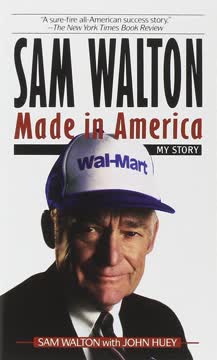
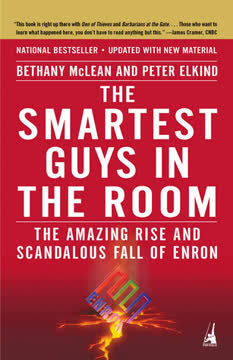
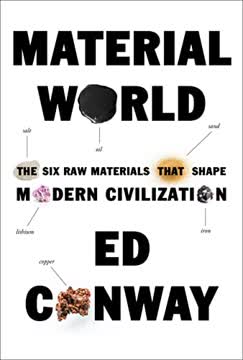

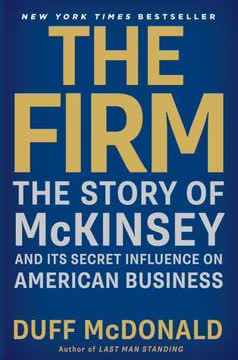

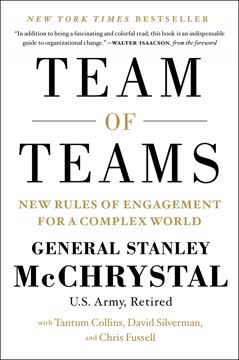

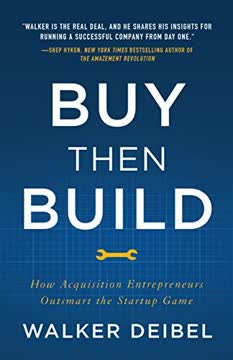
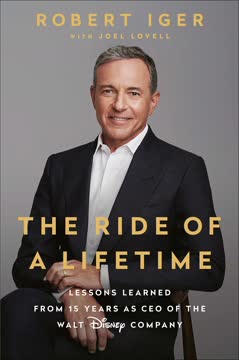
Download PDF
Download EPUB
.epub digital book format is ideal for reading ebooks on phones, tablets, and e-readers.




